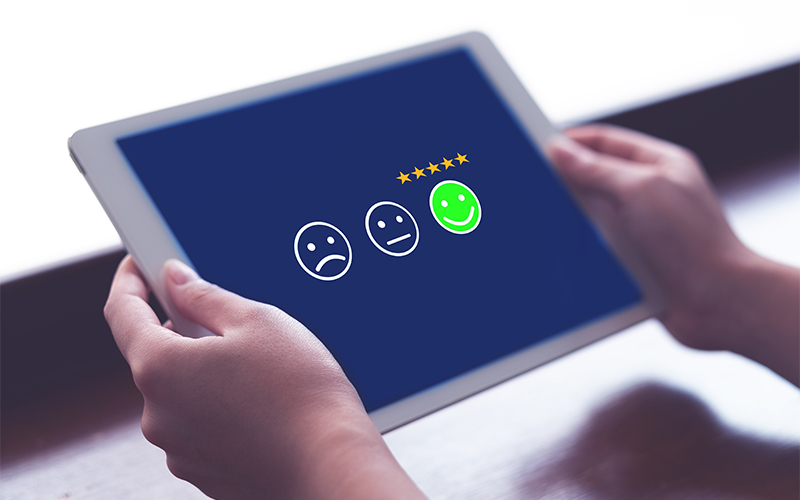“Hey, I want to buy an OTG. Which one do you think is best?”
“I adore this gown. What is the label?”
Whether we realise it or not, brands slip into conversations that involve purchases. It is the first thing customers notice and an influential factor in their buying decision.
For businesses, it is a key force that drives success. Marketers, therefore, prioritise brand building in their marketing strategy.
Building a successful brand begins with quantifying its health so as to identify its strengths and weaknesses. Here are eight metrics that will help:
- Net Promoter Score (NPS)
- Brand Loyalty
- Share of voice(SOV) or Visibility
- Brand Sentiment of Brand Reputation
- Universal Interaction Rate
- Brand recall (unprompted and prompted)
- Purchase intent
- Brand Equity
Have you ever been asked this question after using a product/service?
"How likely are you, on a scale of 1 to 10, to suggest our company/product/service to a friend or colleague?"
A seemingly innocuous question, yet one that helps businesses track a leading brand health metric - the NPS.
Scores of 9 and 10 come from promoters - they are strong advocates of your brand; satisfied customers tend to score between 6 and 8, but they are also easily swayed away by competitors; and those who rate less than 6 are the detractors - the extremely unhappy ones.
A positive NPS score is considered good, while a score of more than 50% is considered great.
NPS is a simple yet efficient metric for quantifying the word-of-mouth brand promotion index.
A study found that 88% of consumers are influenced by word-of-mouth recommendations from family and friends because they trust them.
Repeat customers are proof that your company keeps its promises. Their loyalty towards your brand saves you marketing costs and resources, and also contributes positively to your NPS. Brand loyalty, therefore, is a reliable indicator of your brand's health.
To measure it, ask survey questions about customer satisfaction levels, the product's/service's worthiness, and consumers' trust in your brand.
This metric is a measure of your brand’s popularity in your targeted market segment. The share of voice provides a fairly accurate picture of your brand’s comparative performance in the market.
How do you quantify it? An organic search on the internet is an excellent place to start - if you feature in the top 5 or even appear on the first page, it signals an effective SEO plan for visibility. Another useful medium is social media – how often do you appear in people's conversations?
“Your brand is what other people say about you when you are not in the room” ~ Jeff Bezos
True! Today, when information travels at breakneck speed, your brand precedes you.
What is the public’s opinion of your brand? Most social listening tools have a sentiment analysis feature. They monitor brand mentions on the internet to determine brand sentiment: the percentage of positive, negative, and neutral mentions of the brand over time.
Interactive advertising is at the forefront of future brand advertising tactics. It is useful to know the percentage of people who interact with your advertisements for more than 0.5 seconds. This demonstrates that you have piqued someone's interest enough for them to desire to learn more. This is what the Universal Interaction Rate measures.
I recall how we used to associate the brand Godrej with steel cupboards. People who have them still do!
This is an example of brand recall, in the unprompted category. It tells you the percentage of people who readily recall your brand for a specific product/service. This metric works well for popular brands.
Smaller brands needn’t get disheartened. The prompted category of brand recall is for you. It is measured based on the answer to this survey question:
“Please tick all the [industry] brands that you have heard of about this [product] / would consider buying this [product] from.”
A score above 50 is a healthy sign.
Purchase intent indicates how likely consumers are to move from knowing your brand to purchasing your products. This is done by using a direct question:
"How likely are you to buy from [brand] based on what you know about them?"
The percentage of respondents who answered "very likely" gives the score.
Brand equity is the master of all metrics. It combines the unprompted brand recall rate, the purchase intent score, and the NPS to quantify the value of your brand.
Consider this scenario: Customers line up to buy a new release from Apple, even though it is usually more expensive than comparable products from competitors.
This is because they don’t mind paying a premium for a brand they admire.
This metric is not easy to build, but worth striving for.
Conclusion
Each metric has its own significance in measuring brand health. They must all be taken into account to get a comprehensive perspective of the brand’s performance.
Organise your survey results and investigate the areas where you are falling behind. The sooner the better for your business.
“Your brand is the single most important investment you can make in your business” ~ Steve Forbes
Think Google, Apple, Reliance and Godrej. Didn’t the phrase ‘reputed brands’ flash before your eyes?
*For organizations on the digital transformation journey, agility is key in responding to a rapidly changing technology and business landscape. Now more than ever, it is crucial to deliver and exceed on organizational expectations with a robust digital mindset backed by innovation. Enabling businesses to sense, learn, respond, and evolve like a living organism, will be imperative for business excellence going forward. A comprehensive, yet modular suite of services is doing exactly that. Equipping organizations with intuitive decision-making automatically at scale, actionable insights based on real-time solutions, anytime/anywhere experience, and in-depth data visibility across functions leading to hyper-productivity, Live Enterprise is building connected organizations that are innovating collaboratively for the future.







